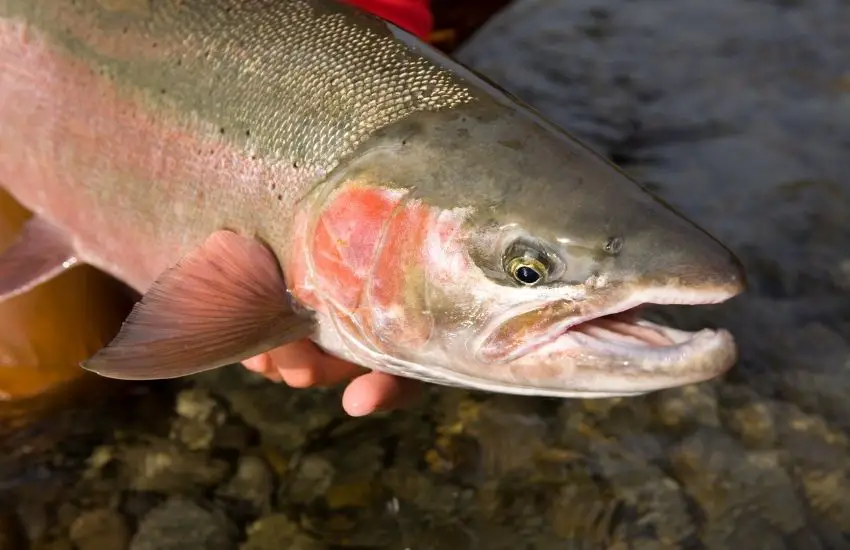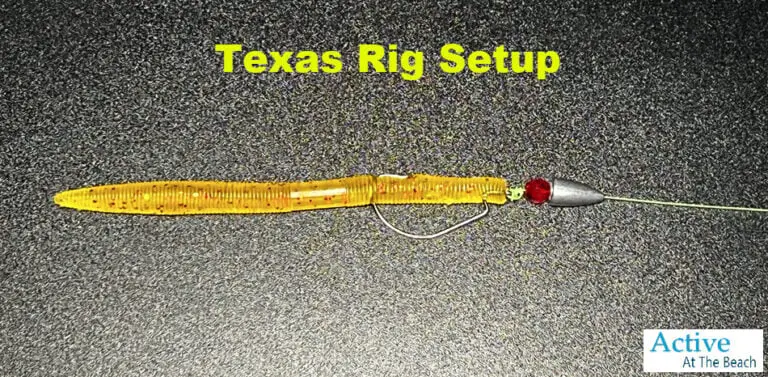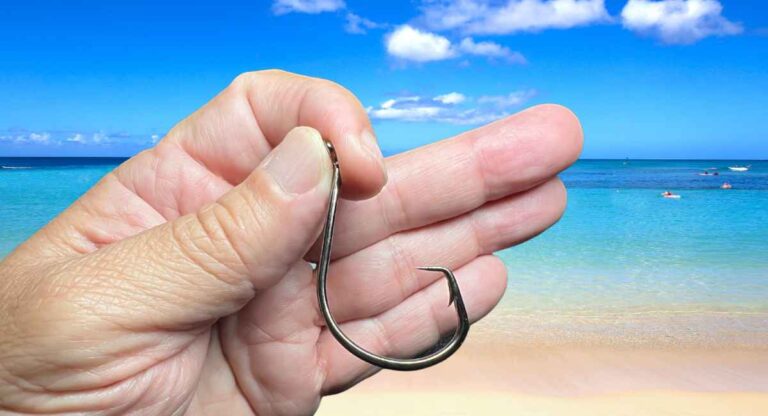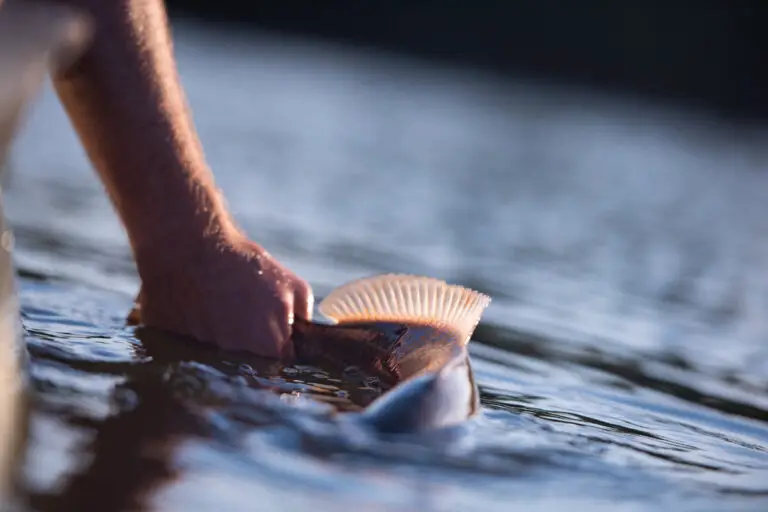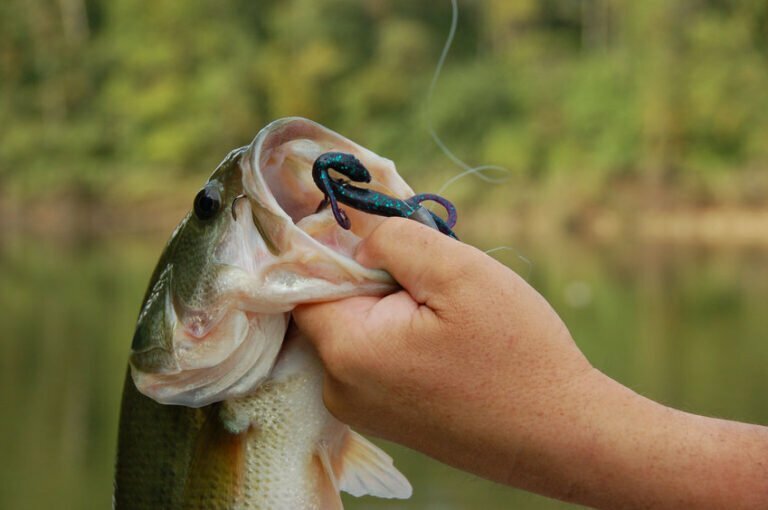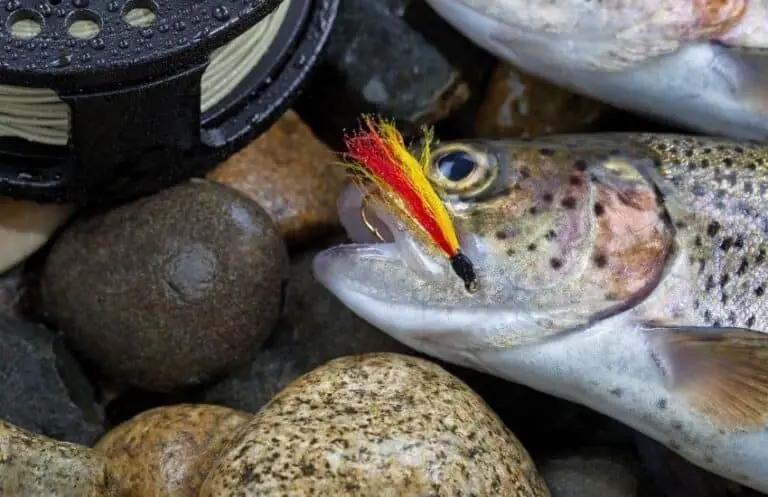5 Best Steelhead Rigs for Bank Fishing And Bobber Fishing
This guide reviews the best steelhead rigs for bank and bobber fishing, how to build and fish, and seasonal runs, and best baits and lures.
The hard-fighting, silvery pinkish fish known as the “steelhead” (or “steelie”) is often called the “fish of a thousand casts,” implying that they are difficult to capture! Which makes them a popular fish to go after, armed with patience and the right rigs.
So whether you’re a bank or bobber fishing for steelhead, novice, or pro, I’ll share some of the best rigs out there!
The five steelhead rigs I’ll cover in this blog give you plenty of options for most fishing situations out there. You learn how to rig:
- Bobber Doggin Rig
- Worm Rig
- Bead Rig
- Bottom Bouncing Rig
- Bobber And Jig Rig
This post is all you need to start catching steelhead. Let’s get started!
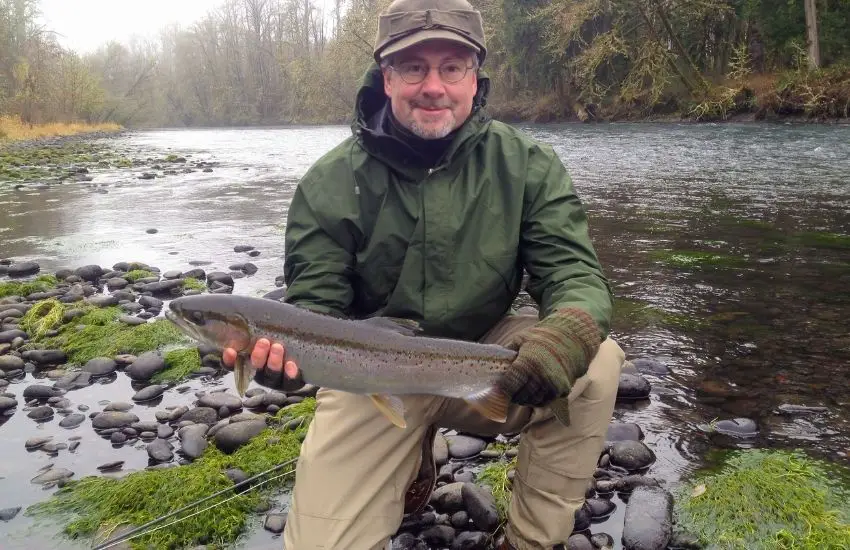
Fishing For Winter Steelhead
Steelhead can be divided into winter and summer “runs” depending on when they return to freshwater. The spring is typically the time of year when both summer and winter run to spawn.
During the winter run, steelhead that is migrating to spawn are extremely focused and will be ravenous feeders at this time.
Fishermen wanting to catch steelhead in the winter should focus their efforts on late November through May in locations like the Pacific Northwest and The Great Lakes Region.
Best Rig For Winter Steelhead
Bobber Doggin Rig
The bobber doggin rig is a popular bank fishing setup used by steelhead anglers who want to more fish in faster currents.
This is an excellent rig for fishing bobbers and will move swiftly through the water as it travels along with the current tilted and pointing downriver.
You want the sinker to pull the float downstream as a dog might tug on its leash, so choose a weight that is not too little weight but not too much weight and snags.
How To Fish The Bobber Doggin Rig
- Determine the water depth.
- Set the bobber stopper depth a foot deeper than that.
- Locate a spot on the river where the current is about the same speed as that of a person walking.
- Start casting close to the bank and move outward to target fish near the bank first.
- As the rig will drift downstream, keep some tension on the line and make sure the sinker bounces to maintain good bait action.
- Retrieve to keep the line up as the bobber rig passes.
- To modify the bouncing motion of the rig, lower or raise the bobber to a suitable level.
Bobber Doggin Rig Part List
- Bobber Stops: 2
- Stop Bead
- Corky
- Bobber Doggin Bobber: 1/2 to 2/3 oz weight
- Swivel: 3-way snap swivel
- Hook: 1/0 or 2/0 octopus for steelhead (you would use 2/0 for salmon)
- Lure: Yarnie or Roe bag
- Weight: 1/2 to 1 oz lead. Use a tangle-free weight.
- Dropline for hook: 3 to 4-inches in length, 10 lbs monofilament
- Dropline for bead: 2-foot length
Steps To Setup Bobber Doggin Rig
- Thread and tie the two stops to the main line.
- Thread the stop bead to the desired bobber depth to prevent float slips.
- Optionally thread a corky after the bead to prevent line tangles.
- Thread bobber onto the main line.
- Tie the line to the top of the 3-way swivel using the “improved cinch” knot.
- Attach weight to 3-way swivel.
- Secure the octopus hook to the end of the drop line using the “egg loop” knot.
- Peg the corky with the Yarnie using the drop line.
- Tie drop line to the 3-way swivel using the “improved clinch” knot.
- Run a “naked” hook
Tying Spawn Bags To Your Line For Steelhead Rigs
Spawn bags are often used on steelhead rigs because they act as bait so the other fish don’t see your hook. Check out this video from “Pautzske Bait” on how to tie spawn bags to your line for steelhead rigs.
How To Catch Steelhead Bobber Doggin
In this video, the folks at “Addicted Fishing” are going to show you how to catch steelhead bank fishing a Bobber Doggin rig.
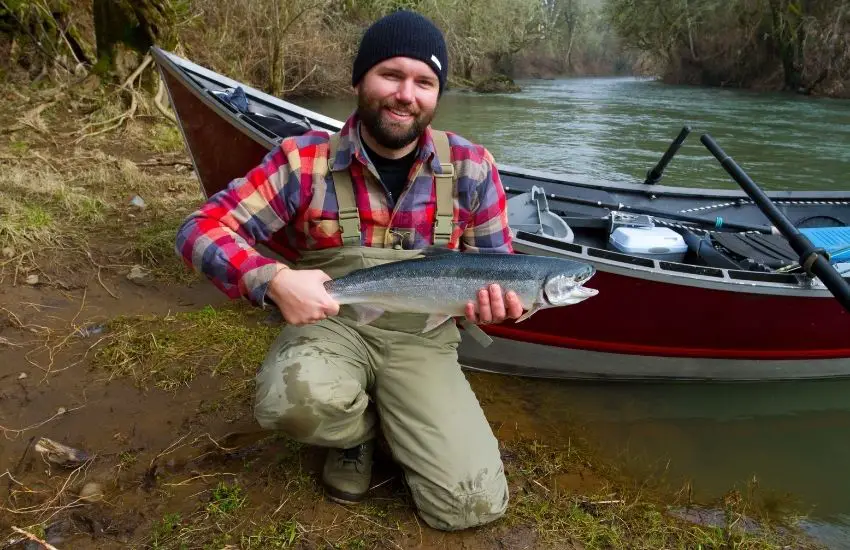
Fishing For Steelhead In The Summer Runs
The summer migration run begins in May and is at its strongest in June and July when the fish return to fresh water from the ocean. It usually completes by November.
For the summer run, steelhead enters rivers as sexually immature at first. They typically migrate greater distances than winter-run steelhead and may wait up to ten months in freshwater before reproducing. These will tend to have larger numbers of smaller steelhead periodically.
Best Rig For Summer Steelhead
Worm Rig For Steelhead Trout
The worm rig is one of the best steelhead rigs for bank fishing or from a boat in the summer. It can be rigged with a three-way swivel with either a sinker for bottom rigging or a bobber to fish in the water column.
How To Fish The Worm Rig
- Once you’ve attached the bait appropriately, make sure it is deep enough. You don’t want it too high up on the worm, but you also don’t want it too low where it will slide off easier when you start reeling in.
- If you want to test your setup, cast out about 20 feet and slowly pull back so the line is taut, but not too tight. This will ensure your worm rig stays on until something picks it up. If it still has some slack to it, simply reel in and cast out again.
The Worm Rig Parts List
- Worm: 8 to 10-inch pink worm; purple or blue color paddle tail optional
- Hook: 1/0 or 3/0 octopus for steelhead (you would use 3/0 for salmon)
- Line Threading Needle: 8 to 10-inch
- 3-Way Swivel
- Beads: 1 for hook and one for at worm head; red color
- Weight: 1/2 to 1 oz lead. Use a tangle-free weight.
- Dropline: 2 to 4-feet in length, 15 lbs monofilament
Steps To Setup The Worm Rig
- Secure the steelhead worm hook to the end of the drop line using the “egg loop” knot.
- Feed a bead through the drop line to the hook.
- Thread the drop line through the worm using the threading needle.
- Feed a second bead through the drop line to the threaded worm.
- Tie the drop line to the three-way swivel.
- Attach sinker dropline to main line using a 3-way swivel.
- Tie the main line to the top of the 3-way swivel using the “improved cinch” knot.
- Attach the bead to the end of the dropline for the sinker.
- Attach weight to 3-way swivel.
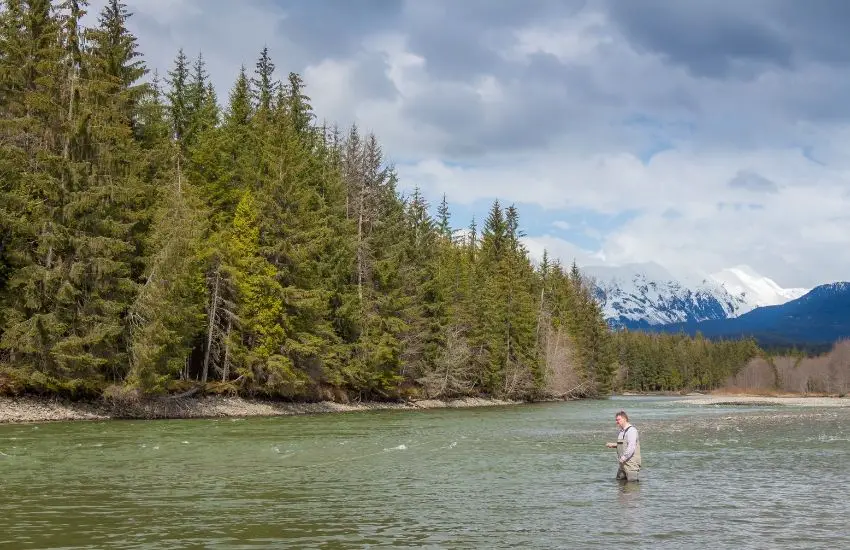
Drift Fishing For Steelhead
A drift fishing rig is a great way to catch steelhead during summer or winter, but it can be tough because the fish are looking for something that they can attack quickly.
The best place on the river with slack water – wide deep slow-moving rivers provide more success than narrow channels that have lots of current flowing through them; sometimes eddies do just fine too so keep an eye out if the rig works right.
Best Drift Fishing Rig For Steelhead
There are numerous rigs that one can use for steelhead fishing, each of which is best suited to a specific technique and water conditions.
Some lures drift downstream better than others, however, the majority of lures are more effective if cast upstream and allowed to drift over the fish before you begin your retrieve.
Light action rods are a good choice for this type of fishing as they allow you to feel the light bites of smaller fish and trout that might be in your area or passing through on their way upriver.
If you plan on using larger lures such as spoons, plugs, or spinners, however, you might want to consider a medium or even heavy action rod as a great option. This will allow a hookset on the fish more easily and reel it in faster, making for better fighting conditions on your end.
Steelhead Bead Rig
The bead rig is one of the best steelhead rigs when fishing on the river’s bottom.
During the steelhead spawning season, when steelhead and salmon are releasing their eggs, this bead appears to be a fish egg as it floats down the river.
The bead rig usually consists of a bead on a leader followed by a bare hook and sinker line.
TIP: Use a pencil weight or tangle-free sinker to allow the rig sinker to bounce along the bottom without getting snagged.
How To Fish The Bead Rig
- Enter a river location that is about chest deep and has a current approximately walking speed from your boat or wading.
- Begin casting at a 45-degree angle upstream, and allow the rig to drift until it reaches a 45-degree angle downstream.
- As the rig flows downstream or through the current, keep some tension on the line and make sure the sinker bounces to maintain good bait action.
- Retrieve in a way to keep the bouncing action as the rig passes.
- When retrieving the rig, be sure to avoid snagging the sinker. If necessary, the lighter drop line is also used to free oneself from the rig.
How To Size The Bead Rig
There are a few factors to consider while sizing a bead rig’s tackle length:
- Leader lines with a shorter length are advised for fast waters or larger beads, while longer leader lines are recommended for slower-moving rivers or smaller beads.
- Large beads range from 10-12 mm, while smaller beads range from 6-8 mm in size.
- Hook sizes vary based on the size of the bead used.
Hook Sizes
- 6 mm beads: Size 6 to 8
- 8 mm beads: Size 4 to 6
- 10 mm beads: Size 2 to 4
- 12 mm beads (or larger): Size 1/0 to 2
The Bead Rig Parts List
- Bead: 12 mm recommended
- Hook: 1/0 to 2 Octopus
- Weight: 1/2 oz lead. Use a pencil weight or tangle-free sinker
- Barrel Swivel: Size 4
- Dropline: 3 to 5-feet in length, 12 lbs monofilament or fluorocarbon
Steps To Setup The Bead Rig
- Tie the hook to the drop line using a “uni” knot.
- Tie the drop line directly to the braided main line using a “knot”.
- Keep a 3″ gap between the hook and the bead to allow the steelhead to strike the bead and be caught when retrieving.
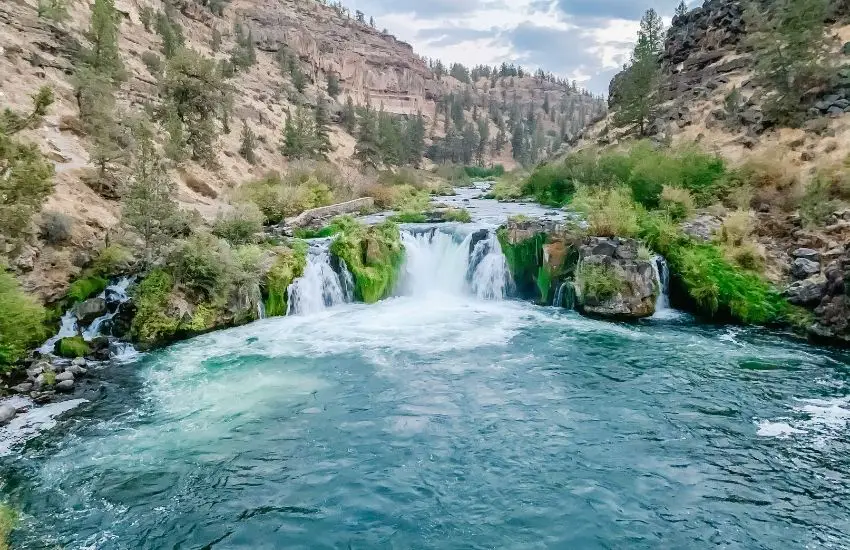
Bank Fishing For Steelhead
Although bank fishing for steelhead is typically confined to coastal destinations, there are certain occasions where this type of fishing can be productive in small inland lakes. Such locations that offer the possibility of bank fishing for steelhead include saltwater bays that have an abundance of fresh-water runoff during their spawning season.
Bank fishing for them is possible in many places when they enter rivers to spawn with the female’s eggs. This process occurs from late October to early June and it can also be found in freshwater lagoons or estuaries when the steelhead prefers saltwater over freshwater
Best Steelhead Rig For Bank Fishing
Bottom Bouncing Rig
The bottom bouncing rig is a great rig for targeting steelhead. This rig functions by bouncing the bait on the river bottom in this form of bank fishing to catch steelhead.
The secret to success is finding the correct weight, which sinks to the right depth and stays there without having too much weight where the bait sinks out of the water column.
This rig is best presented with a slow retrieve that keeps you in touch with the bottom of your fishing area. When this happens, steelhead has no problem slamming into the bait!
TIP
To avoid the rig sinker from being snagged, use a pencil weight or bell sinker to allow it to bounce over the bottom without getting caught.
How To Fish The Bottom Bouncing Rig
- Locate a spot on the river or lake bank where you can cast into current without interference.
- Start casting close to the bank and move outward to target fish near the bank first.
- As the rig progresses downstream or through the current, keep some tension on the line and make sure the sinker bounces to maintain good bait action.
- Retrieve to keep the bouncing action as the rig passes.
- Take care to avoid sinker snagging while retrieving the rig. The lighter sinker drop line is also used to break free of the rig, if necessary.
Bottom Bouncing Rig Part List
- Spreader: 3-way T-spreader. Alternatively, you can use a T-turn 3-way swivel
- Hook: 4/0 octopus hook for steelhead (you would use 2/0 for salmon)
- Lure: Roe bag with colored fluorescent Styrofoam balls
- Weight: 1/2 oz lead. Use a bell sinker, pencil weight, or string of split shot.
- Dropline for weight: 2-foot in length. 8 lbs monofilament for a rocky bottom.
- Dropline for hook: 3 to 4-inches in length, 10 lbs monofilament
Steps To Setup Bottom Bouncing Rig
- Load the mainline onto the reel spool. I recommend a 30-lbs braided line.
- Tie the main line to the top of the spreader using the “improved cinch” knot.
- Secure the octopus hook to the hook drop line using the “egg loop” knot. This knot will allow you to add the roe bag.
- Tie hook drop line to the T-bar of the spreader or T-turn swivel using the “improved clinch” knot.
- Attach weight by tying an “egg loop” knot on one end of the weight drop line. This prevents as much friction between the weight and the drop line.
- Tie the other end of the weight drop line to the bottom of the spreader using the “improved clinch” knot.
- Add the salmon eggs to the roe bag and fasten them to the hook.
- Run a “naked” hook
Float Fishing For Steelhead
Step-By-Step How To Float Fish For Steelhead
In this video, the folks from “Addicted Fishing” explain how to fish for steelhead on a bank using different bobber types and the proper bobber depth.
Best Float Fishing Rig For Steelhead
Bobber And Jig Steelhead Rig
The Bobber And Jig Rig is ideal for fishing steelhead. This is a wonderful bank fishing rig, but it may also be used for drifting.
This is a simple bobber and rigging combination with an easily adjusted fixed bobber while fishing.
How To Fish The Bobber And Jig Rig
- Set the fixed bobber height at about 6 to 12 inches above the bottom of the river for optimum performance. This will keep the lure in the water column’s strike zone longer.
- Look for a clear location along the river bank where you can cast upstream without interference.
- Start casting close to the bank and move outward to target fish near the bank first.
- Keep the rod tip high when retrieving to keep the braid off the water. It will also keep the fish from seeing the braid, which is more visible than fluorocarbon, and prevent them from hitting the lure.
- Retrieve to keep the line up as the bobber rig passes.
Bobber And Jig Rig Part List
- Jig: 1/4 to 1/2 oz Rabbit fur steelhead or Marabou trout jig
- Float: Fixed float
- Dropline: 3-4 feet in length, 15 lbs fluorocarbon
Steps To Setup Bobber And Jig Rig
- Attach the fixed bobber onto the main line.
- Tie the main line to the fluorocarbon drop line using the “double uni” knot
- Secure the steelhead jig to the end of the drop line using the “egg loop” knot.
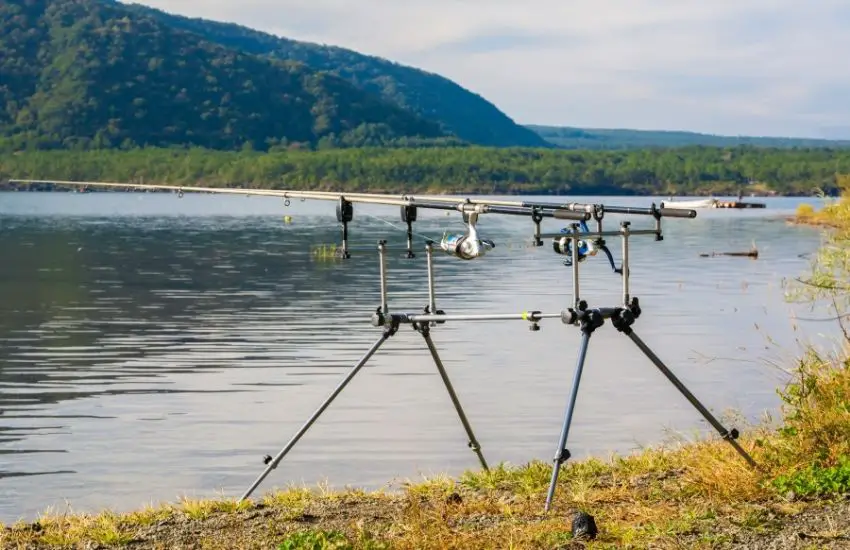
Steelhead Plunking
Plunking For Steelhead
Plunking is a preferred method of fishing for steelhead, salmon, and other species in a fixed location from the shore along a fish migration route. Plunkers fish in a slow current with deep river levels with a plunking rig, putting their rods in rod holders while they wait for nibbles.
Read more about a plunking rig and specific gear and baits for plunking in Salmon Rigs For Bank Fishing: Best Rigs For Plunking, Drifting, And Casting.
Line Recommendations
Selecting the correct fishing line is a crucial decision when building your rig, as it can greatly impact your chances of success on the water.
For main line on spinning reels, I prefer braid. It has no line memory, which means longer casts and fewer line twists. I use a longer monofilament leader line when casting into heavy cover or boulders to avoid breaking off.
Because I want to cast for longer distances with soft plastics and other lures, I prefer to use braid as my bait casters’ mainline. For live bait rigs, I can make shorter casts without frightening the fish, so I prefer a monofilament mainline that is less abrasive.
- Braid: 30-50 lbs for the main line since it is easier to handle on a baitcaster and 10-15 lbs for a spinning reel to cast further without the worry of wind knots.
- Monofilament: 10-20 lbs for abrasion protection around structures or many rocks, but it will be less sensitive to small bites.
Knots For Tying Fishing Rigs
How To Tie The Improved Clinch Knot
Also known as the “fisherman’s knot,” the improved clinch knot is useful for tying off hooks and leaders. Learn how to tie the improved clinch knot here:
How To Tie An Egg Loop Knot
This knot allows you to change out the weight or other components for adaptability. Learn how to tie the egg uni knot here:
How To Tie A Double Uni Knot
The double uni knot is one of the best knots for tying a monofilament to braid directly. Learn how to tie the double uni knot here:
Great Plugs And Twitch Bait For Steelhead Drift Fishing
Plugs are best fished on a line, by themselves, not behind a flasher. This lure initiates a wounded fish.
- Brad’s Cut Plugs – Comes with a split-cavity design to hold filets. It has a wounded baitfish action that gets their attention. The UV reflective paint makes it easy to spot.
- Brad’s Super Bait Fishing Lure (Lemon Lime) – This bait-holding lure attracts fish with a super rotating action. It is proven very effective for Summer and Winter Steelhead fishing. It can be fished by trolling, casting, plunking, or back bouncing. Add your scent or filet.
Steelhead Lures Perfect For Bank Fishing And Bobber Fishing
Casting spinners, spoons, and divers are other standard rigs for steeling but still use worms as a lure, especially when dealing with bigger-sized fish.
Baits For Steelhead Plunking
The fresh bait of choice for Northwest steelhead anglers is salmon eggs. These are often hard to find naturally since Grizzly bears like them too. So the best place to get these is at the local bait shop. There are also synthetic versions available.
Sand shrimp is another excellent choice. These cured and dyed shrimp are irresistible to steelhead.
Other natural baits include:
- Brined Herring
- Herring Filet
- Anchovies
- Atlantic Prawn
- Pink Worms
- Plastic Eggs To Hold Salmon Eggs
Conclusion
The finest steelhead rigs for bank and float fishing will differ depending on your location, personal taste, and the water conditions you are fishing in while by boat or on the bank.
I reviewed how to set up these five steelhead rigs:
- Bobber Doggin Rig
- Worm Rig
- Bead Rig
- Bottom Bouncing Rig
- Bobber And Jig Rig
You discovered how they’re built and fished, drift and bank fishing steelhead, the summer, and winter runs for steelhead, as well as instructional how-to videos.
I hope this article has helped you find a few new ideas to try out next time you head out on the river to catch fish.

